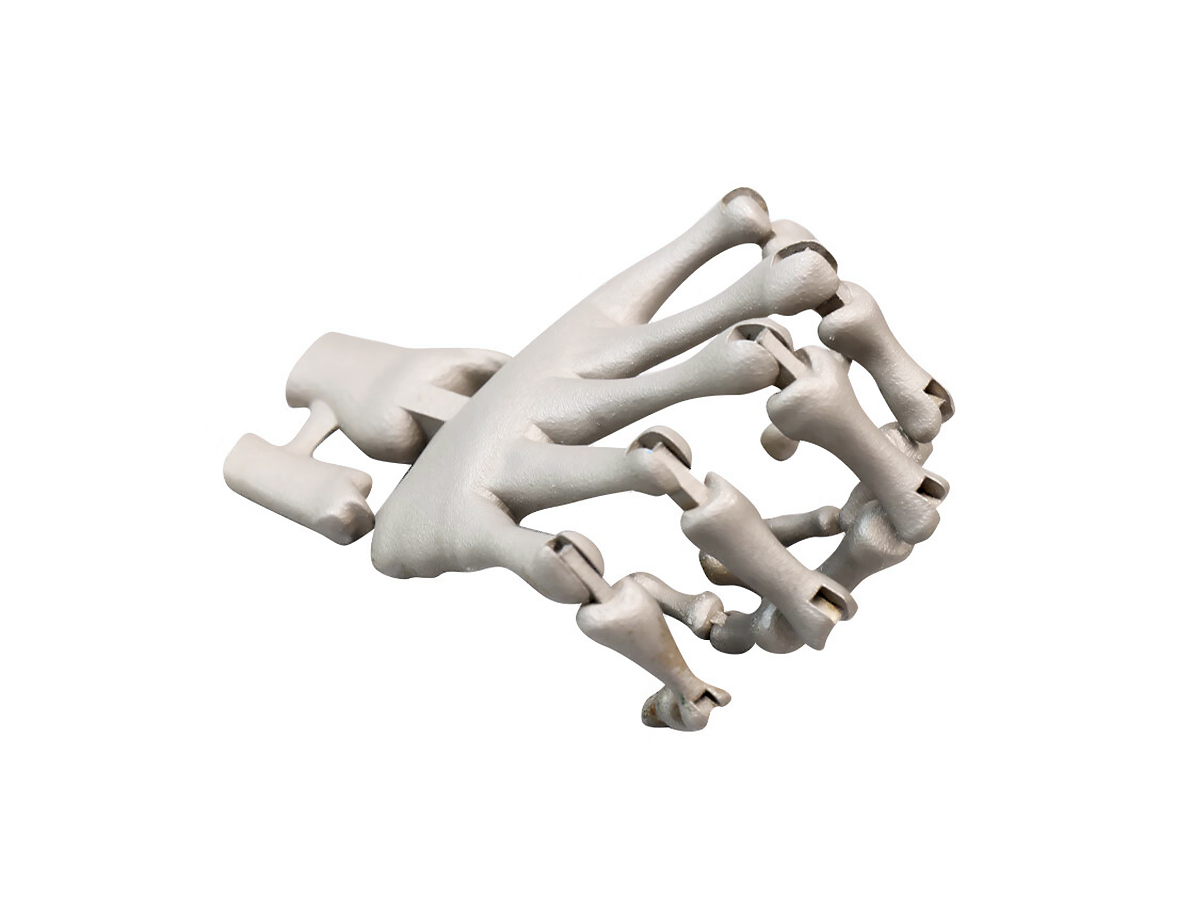High-Precision Titanium 3D Printing: Custom Parts for Medical Prosthesis Application
Introduction
Titanium 3D printing offers groundbreaking precision for the production of customized medical prostheses. Utilizing additive manufacturing technologies like Selective Laser Melting (SLM) and Electron Beam Melting (EBM), medical-grade titanium alloys such as Ti-6Al-4V ELI (Grade 23) and Ti-6Al-7Nb are precisely fabricated to achieve patient-specific geometries with dimensional accuracies of ±0.05 mm.
Compared to traditional manufacturing, Titanium 3D printing significantly reduces prosthesis production time by up to 50%, enhances biocompatibility, and allows for complex, patient-tailored implant structures.
Applicable Material Matrix
Material | Density (g/cm³) | Tensile Strength (MPa) | Yield Strength (MPa) | Elongation (%) | Biocompatibility |
|---|---|---|---|---|---|
4.43 | 900 | 830 | 10% | Excellent | |
4.52 | 950 | 880 | 12% | Excellent | |
4.51 | 345 | 170 | 24% | Excellent | |
4.43 | 950 | 880 | 14% | Good | |
4.65 | 980 | 930 | 12% | Good |
Material Selection Guide
Ti-6Al-4V ELI (Grade 23): Optimal for patient-specific orthopedic implants, offering exceptional biocompatibility, corrosion resistance, and fracture toughness.
Ti-6Al-7Nb: Preferred for hip and knee replacements, combining superior mechanical strength (950 MPa tensile strength) and biological compatibility.
CP-Ti Grade 1: Recommended for cranial implants and dental prostheses due to excellent ductility (24% elongation) and maximum biocompatibility.
Ti-6Al-4V (Grade 5): Suitable for load-bearing implants such as spinal fixation devices, providing high mechanical strength with proven implant performance.
Ti-6Al-2Sn-4Zr-2Mo: Ideal for custom prosthetic components requiring high strength and corrosion resistance, often utilized in highly demanding implant environments.
Process Performance Matrix
Attribute | Titanium 3D Printing Performance |
|---|---|
Dimensional Accuracy | ±0.05 mm |
Density | >99.8% |
Layer Thickness | 20–50 μm |
Surface Roughness | Ra 5–15 μm |
Minimum Feature Size | 0.3–0.5 mm |
Process Selection Guide
Patient-specific Customization: Precise tailoring of implant geometries to individual patient anatomy, improving clinical outcomes and patient comfort.
Complex Geometry Capability: Ideal for intricate lattice structures promoting osseointegration and improved stress distribution.
Rapid Turnaround: Shortens prosthesis manufacturing time from weeks to days, accelerating patient treatment.
Excellent Biocompatibility: Proven medical-grade titanium alloys ensure superior compatibility and minimize the risk of rejection.
Case In-Depth Analysis: Customized Ti-6Al-4V ELI Prosthetic Hip Implant
A medical device manufacturer required high-precision hip implants customized to individual patient anatomical requirements. Utilizing our titanium 3D printing service with Ti-6Al-4V ELI (Grade 23), we fabricated implants achieving densities over 99.8%, tensile strength of 900 MPa, and dimensional accuracy of ±0.05 mm. The implant’s lattice structure promoted enhanced osseointegration, reducing patient recovery time by approximately 30% compared to traditional implants. Post-processing included precision CNC machining and comprehensive surface treatments, such as electropolishing, to achieve optimal surface finish and biocompatibility.
Industry Applications
Orthopedics
Custom hip and knee prostheses are tailored to patient anatomy.
Personalized spinal fusion implants.
Patient-specific orthopedic trauma plates and screws.
Dental and Maxillofacial
Individualized dental implant structures.
Customized craniofacial reconstruction implants.
Precision-made jaw prostheses and surgical guides.
Cardiovascular
Customized titanium stents and valves.
Patient-tailored components for artificial heart pumps.
Complex vascular graft scaffolds.
Mainstream 3D Printing Technology Types for Medical Prostheses
Selective Laser Melting (SLM): Precision-based method ideal for highly detailed, patient-specific metal implants.
Electron Beam Melting (EBM): Preferred for larger implants requiring excellent fatigue properties and minimal residual stress.
Direct Metal Laser Sintering (DMLS): Suitable for intricate, small-scale implants with tight tolerances and high surface quality.
Binder Jetting: Efficient for prototype production and early-stage medical component testing.
Laser Metal Deposition (LMD): Best used for precise repairs and feature enhancements on complex medical devices.
FAQs
What titanium alloys are best suited for medical prostheses?
How accurate is titanium 3D printing technology for customized implants?
What are the biocompatibility standards for titanium prosthetic components?
What post-processing methods are required for titanium 3D printed prostheses?
How does titanium 3D printing improve clinical outcomes compared to traditional prosthesis manufacturing methods?

